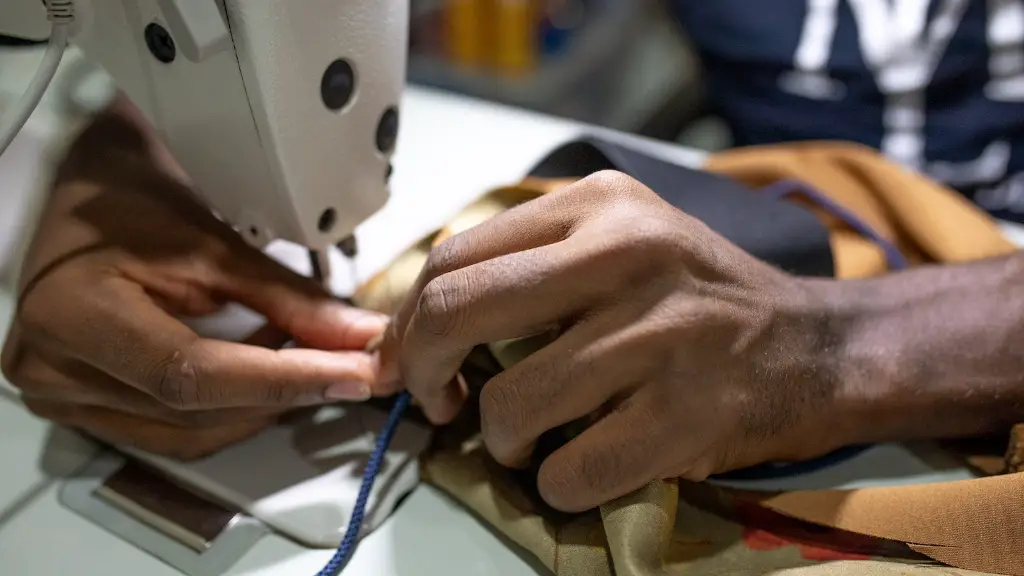The Basics of Leather Sewing
Leather is a durable and luxurious material for creating clothing and accessories. Sewing leather can be a daunting task for amateur sewers seeking to move beyond fabric. The success of leather sewing projects depends on the acquisition of specialty tools and an understanding of leather sewing techniques that are slightly different than those used to sew fabric.
Special Considerations for Sewing with Leather
In contrast to softer fabrics used for garments, leather requires more pressure to penetrate the thick material. This means sewers must adjust their stitch length. Shorter stitches allow the leather to be pierced more easily and gives projects extra strength and durability. Sewers should also avoid backstitching. When leather begins to pucker or drag, a Teflon foot should be used. Sewers making straps, belts and projects with curved edges should find an edge stitcher foot useful.
Choosing the Right Sewing Machine for Leather Projects
Photos and other embellishments can easily be applied to leather with a heavy-duty sewing machine. Heavy-duty machines have more powerful motors that can pierce the hard leather with no issues. There are also leather sewing machines and upholstery sewing machines that are specifically designed for sewing leather. When choosing a needle, it’s important to select one that is strong enough to penetrate the thick material. Heavy-duty needles are typically the best choice for sewers who plan on working with leather.
Tips for Sewing with Leather
Before beginning a project it’s important to condition the leather. By using a soft cloth and leather conditioner, sewers can give the leather a softer texture, a uniform color and greater pliability. It’s also important to use the right kind of pins. Dressmaker pins work great for fabric sewing but pins with a large head may be more effective for leather.
Sewers should also use waxed thread as opposed to regular thread. Regular thread can be used but it won’t provide the same strong and durable seam that waxed thread will. Additionally, sewers should keep the sewing area dust-free, as dust particles can damage delicate leather fibers.
Can a Normal Sewing Machine Sew Leather?
When working with a regular sewing machine, the answer is yes, but with a few caveats. The right modifications must be made in order to sew leather. For example, the needle must be replaced to a leather needle, the stitch length must be reduced and the right foot must be attached. Even with these modifications, it’s best to err on the side of caution and test a scrap piece of leather before beginning a project.
Know Your Leather and Choose Wisely
It’s important for sewers to become knowledgeable about the different types of leather and fabrics, so they understand which fabrics are most suited for various projects. Tools like swatch cards and books can be quite informative and help sewers become more knowledgeable about the properties of different types of leather.
Choose Quality Leather
The quality of leather can also make a big difference. Quality leather is essential for successful leather sewing projects. Sewers should look for leather that is supple and soft, with no visible imperfections.
Protecting the Sewing Machine
When sewing leather, care should be taken to protect the sewing machine and thread. To keep the machine running properly and avoid damaging the needle or thread, sewers should take the time to lubricate the machine often. High-quality sewing machine oil should be used to keep the machine running smoothly.
Caring for Your Leather
In order to make a leather item last, sewers must take the time to care for the fabric. This can be done by applying a leather lubricant that will keep the material soft and supple. Sewers should also make sure to dust clean their items, as dust particles can damage delicate leather fibers.
Dying and Embellishing Leather
Leather can be dyed with oils, waxes and dyes. Depending on the project, leather may be left natural or decorated with embellishments. Sewers who are looking to add detail can use specialty paint to create stitched designs or use paints specifically designed for leather. A variety of hardware and findings can also be used to make leather projects more interesting.
The Right Finish for the Project
When creating a leather item, the finishing touches are of the utmost importance. Sewers can use oils, waxes, dyes and other specialty finishes to give their leather item a unique look.
Finishing the Piece
When designing leather goods with edges, sewers can choose from multiple grain directions and use finishing techniques like painting, pounding, waxing, embossing and edge staining. With the right finishing techniques, sewers can create beautiful leather goods with professionally sewn edges.
Quality Workmanship is Key
When it comes to sewing leather goods, quality workmanship is key. This means taking the time to prep the fabric, using the right needles and thread and making sure the finished product looks professional. By taking the time to create quality projects, sewers can increase the value of their leather goods and make their projects last longer.



